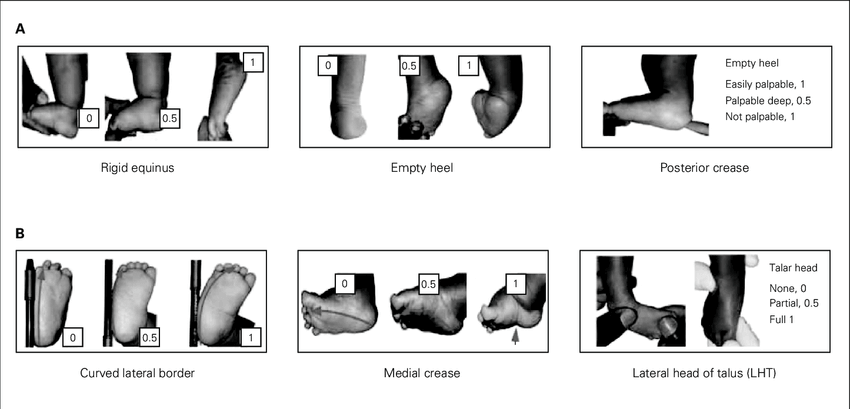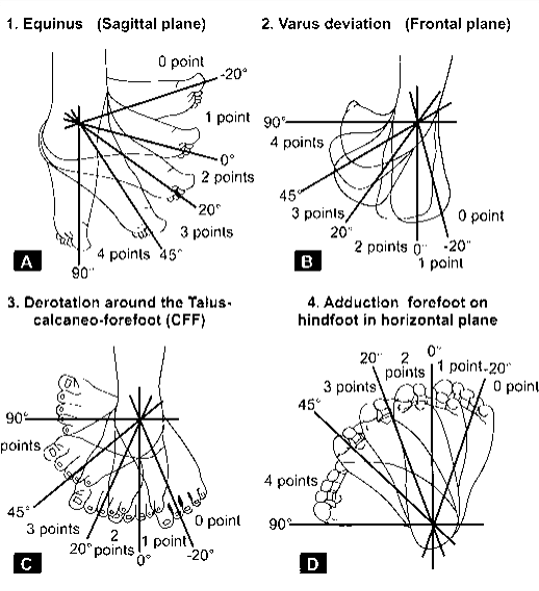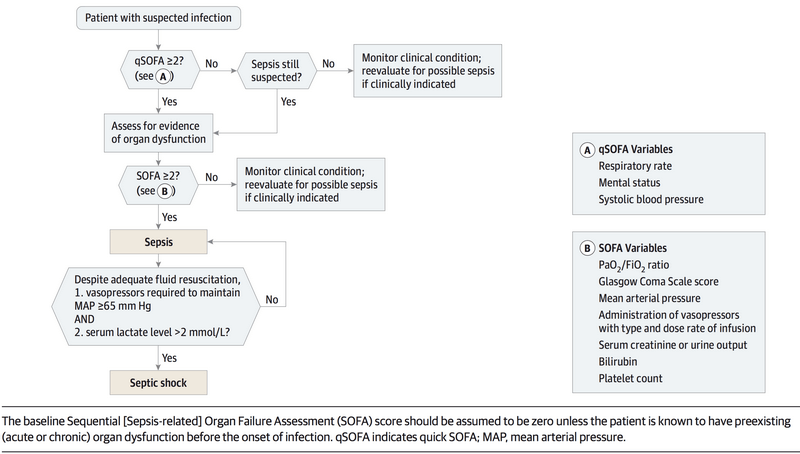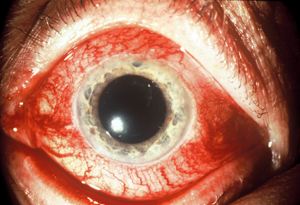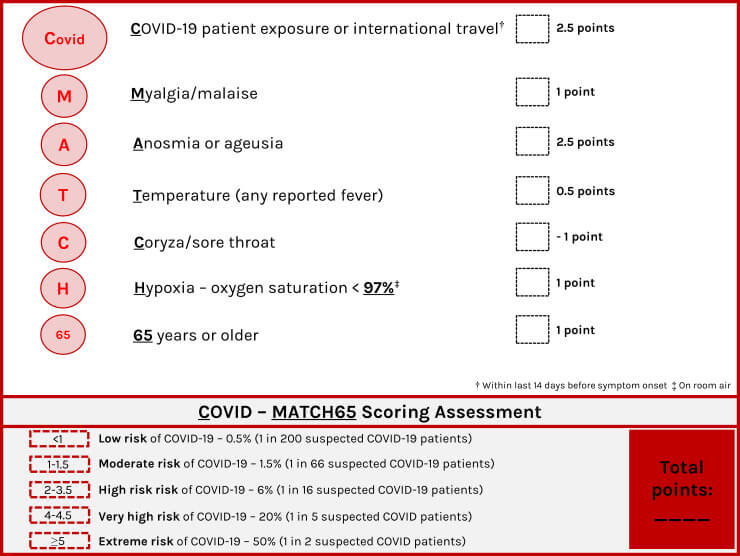Pirani socre
Pirani score for assessment of clubfoot (CTEV) consists of 6 parameters (3 each in midfoot and hindfoot) which is scored as 0, 0.5 or 1 with a maximum possible score of 6. The parameters can be remembered using the mnemonic: PER TOM
- Posterior crease
- Empty heel
- Rigid equinus
- Talar head
- Outer (lateral) border curvature
- Medial crease
| Examination | Midfoot (MFCS) | 0 | 0.5 | 1 | Hindfoot (HFCS) | 0 | 0.5 | 1 |
| Look | Lateral border curvature (reference – pen held against calcaneum) | Straight | Deviates at metatarsal level | Deviates at calcaneo-cuboid joint | Posterior crease (after correction) | Several fine creases | 2-3 moderate creases | Single deep crease |
| Feel | Talar head (palpate uncorrected and then correct) | Completely sinks under navicular | Moves partially but doesn’t completely sink | Fixed | Heel (with index finger in mild correction) | Easy to palpate calcaneum | Palpable calcaneum felt through later of flesh | Calcaneum is deep under layer of tissue and difficult to feel |
| Move | Medial crease (after correction) | Several fine creases | 2-3 moderate creases | Single deep crease | Equinus (after correction with knee in extension) | Dorsiflexion beyond plantigrade | Upto plantigrade | Below plantigrade |
Importance of Pirani Score
- A higher Pirani Score on presentation may indicate that a higher number of casts will be required.
- Relapse is higher with high initial HFCS.
- The tenotomy is done when the Midfoot Contracture Score (MFCS) is less than 0.5 but the Hindfoot Contracture Score (HFCS) remains greater than 1. After the tenotomy, the HFCS improves but does not correct completely.
Dimeglio Classification
Based on degrees of reducibility of 4 deformities (Mnemonic: DAVE) –
- Derotation of carpopedal block (1-4 points)
- Adduction of forefoot (1-4 points)
- Varus (1-4 points)
- Equinus (1-4 points)
And 1 point each for presence of:
- Posterior crease
- Medial crease
- Cavus
- Hypertonia, muscle weakness or chubby foot
Interpretation:
| Grade | Type | Score | Reducibility |
| I | Benign | 0-5 | Completely reducible |
| II | Moderate | 6-10 | Reducible (>50%), partially resistant |
| III | Severe | 11-15 | Resistant, partially reducible (<50%) |
| IV | Very Severe | >15 | Resistant |
